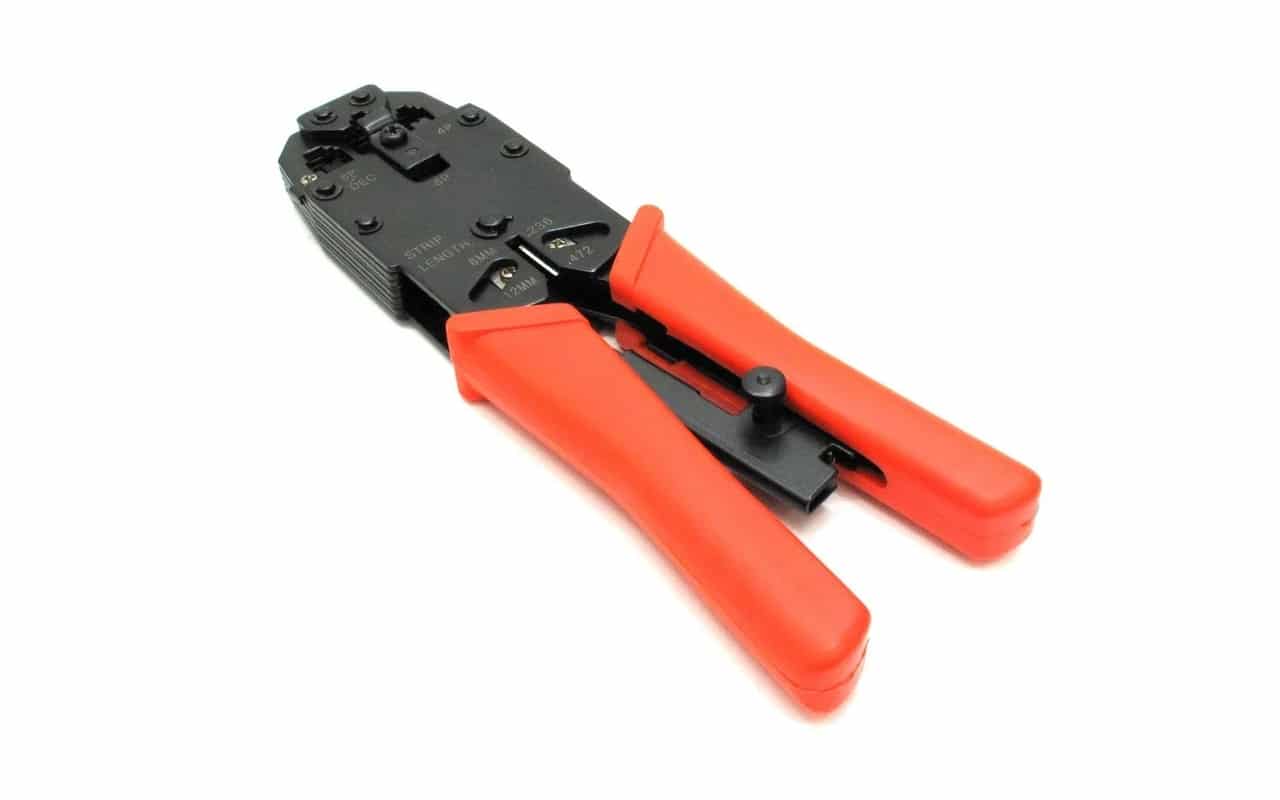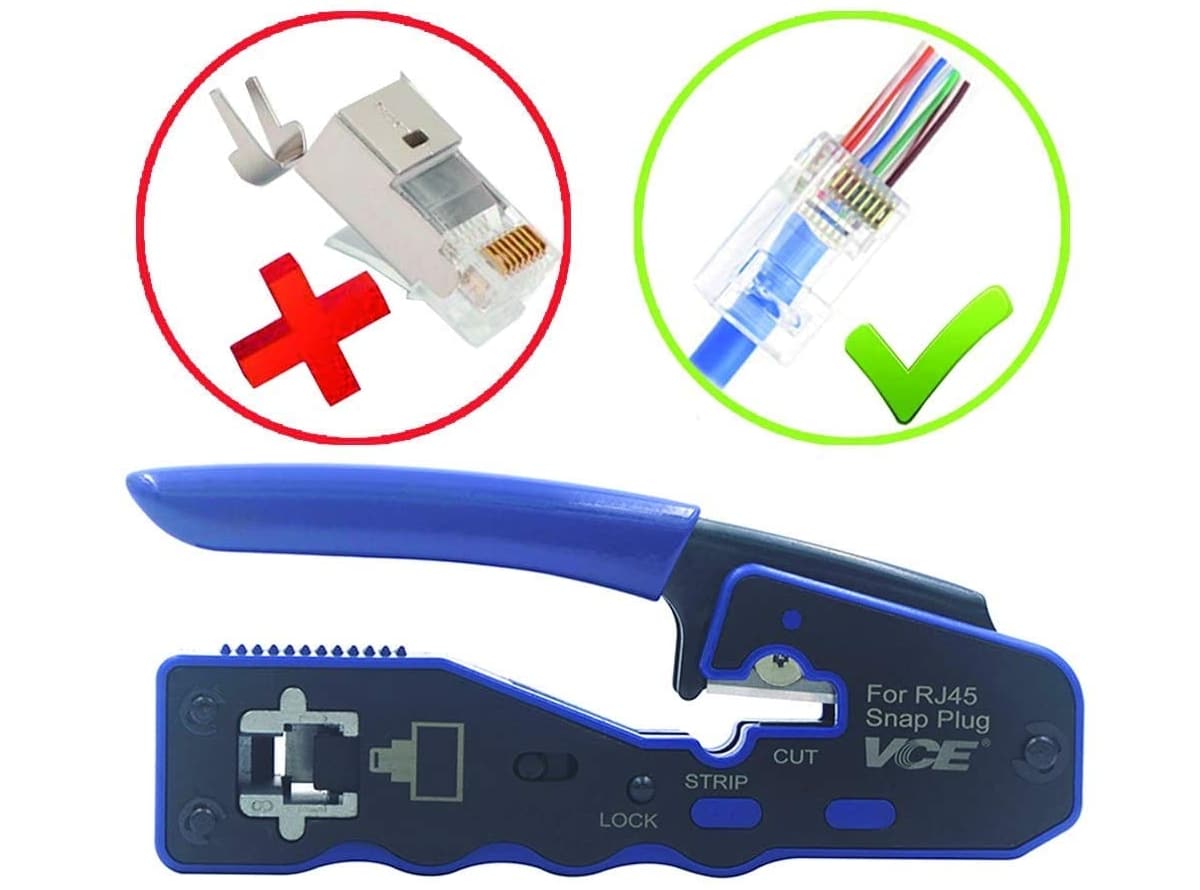
La crimper It is a common tool among electronics and electricians. Despite this, it is not as well known as other tools. The reason is that many hobbyists and makers tend to do without it and use what they have at their fingertips to do the work that this tool does. And be careful, because you should not confuse it with a simple wire stripper, although some also have this utility ...
In this article you will see the great advantages what using a crimper has, the comfort it brings, speed, and everything you need to know about it. Also, as you will see, it is not only used to strip cables and crimp and nothing else, since some offer other extra possibilities ...
What is a crimper?
Some mistake the crimper for a simple wire stripper or pliers, but it is not. In fact, the confusion about this element is such that it has ended up calling a crimper (it does not exist in the RAE) when her real name is grimpadora. But many technicians have mispronounced it and they have been transferring it badly from mouth to mouth until they end up causing almost everyone to call it that ...
In addition to crimping tool, other names that it may receive are stapling pliers, crimping pliers, terminal pliers, crimping pliers, etc. The names are many, but you you can call it whatever...
What you do have to be clear about is that it is not a simple wire stripper, although some have that function. It is a used tool to crimp or crimp two pieces of metal or other malleable materials by deformation. In this way, they can join parts such as terminals or fastons to cables.
There are many crimpers on the market, with multiple functions ranging from cutting cables, removing the insulating sheath from a cable and leaving the tips stripped ready to connect, to the aforementioned crimping. So you will have everything you need in a single tool, which is much more practical.
You will see that there are some specific for very specific cables, and not only for the electrical ones used in electronics and electricity. For example, you have crimpers for network cables such as RJ-11 and RJ-45, also for fiber optic cables, used in networks, as well as coaxial or twisted pair cables used in some applications such as antennas.
Types of crimper
The crimper can be various types, as I have already commented. For example, you can have some like:
- For network cables such as RJ45 Ethernet network cable and RJ11 telephone.
- BNC, for coaxial cables such as TV antennas, DTT, satellite dishes, telecommunications, RG58 (WiFi).
- For terminals or faston, used to work with conductive cables.
- For electronics, similar to the previous one, but admits cables of smaller dimensions with which it is not usually used in the field of AC electricity, but in DC.
- Multifunction, are the most common and can cut cables, wire strippers, in addition to its crimp function.
- Other. There are others for certain specific cables such as HDMI, etc.
If your mechanism of actionThere are manuals, which are the most common and use the force that you exert on their handles. But there are also battery and hydraulic ones, which use an actuator to do the job more comfortably. Obviously, the latter are more expensive ...
How is it used?
The use it's quite simple. It usually has different grimaces where the terminals and cables fit and it is simply a matter of applying pressure with the help of its handle and you can have the job done. You can see the details better in the video, which will be much more intuitive than explaining it in words ...
By the way, if you are going to use the crimper for specific cables like the networkFor example, for Ethernet (RJ-45), you can have access to kits that include the crimper, a cable inserter, wire stripper, cutter, and everything aimed at the most common cables such as RJ-45, RJ-11, and RJ -12.
You should also know that these crimping tools to deform cables can be good options to replace other types of joints such as mechanical or welding. A quick way to bond without the need to apply temperature to some components that are sensitive to it. For example, it has surely happened to you that when trying to weld a joint the insulating wrapping has melted due to the heat ... That would not happen with a crimp joint.
Use tips
If you would like to a guide or tips of use for the crimper, you can follow these points:
- Always choose the correct terminal.
- Strip the end of the wire well, without exposing too much of the insulation, but not falling short either. Usually approx 1/2 cm is recommended.
- Twist the exposed end wires if they are strands rather than rigid copper wire. That helps the braiding to be stronger.
- Insert the terminal with the cable in the correct nest of the crimper (it has several for different dimensions).
- Then squeeze the crimper and release, do not pretend or leave it half-pressed, as it could lead to a not very resistant joint. Now you will have the connection finished.
Crimp vs solder
When you compare the union by crimping and weldinga, advantages and disadvantages can be found.
- Crimp:
- Advantages- It is faster, well made crimp joints can be more durable than soldered ones, more secure connections by not using more brittle metals such as tin solder, works well on both solid and stranded conductors.
- Disadvantages: the signal quality and continuity could be affected, they cannot be undone easily, if unsuitable dies are used the joint could be poor and suffer failures, with braiding and under bending it could loosen,
- Welding:
- Advantages- Welds are usually better in some cases where signal quality is vital.
- Disadvantages: takes longer to make, heat is used (could damage the material or component), cold solder joints (matte color, low gloss) are brittle and cause contact problems, can harden if subjected to vibration and develop microcracks Due to fatigue, mechanical stress or temperature it can be inconsistent.
How to choose the best crimper
For choose the best crimping tool you should take into account the following factors:
- Volume of work that you are going to handle. For high loads you could opt for one with a battery or hydraulic actuator that makes your work easier.
- Gauges you will use. There are more or less small, so you should choose the correct one that adapts to the appropriate gauges.
- Terminal type. You must choose the one you need, depending on how you are going to work with HDMI, RJ-45, fiber optic cables, electrical cables, coaxial cables, etc.
- Accessories? If you are going to work with some cables such as network cables, you may need additional accessories such as those mentioned above in the kit.
As for the the quality, the truth is that most comply with their attack quite well, even the cheap ones. However, there are better and worse, like everything ...
Where to buy one
If you are thinking of buying a crimper, you can find them cheap in several specialized stores, such as these recommended models:
- Crimper with 5 accessories for different types of cables and dimensions
- Professional crimping case for different types of cables
- Crimper for RJ45, RJ11 and RJ12 network cables
- Complete network kit, with tester
- No products found.
- No products found.
